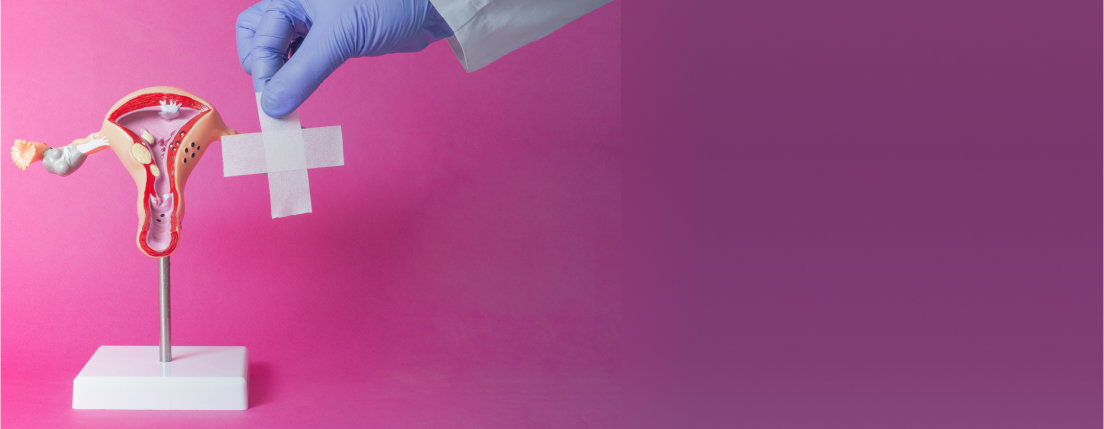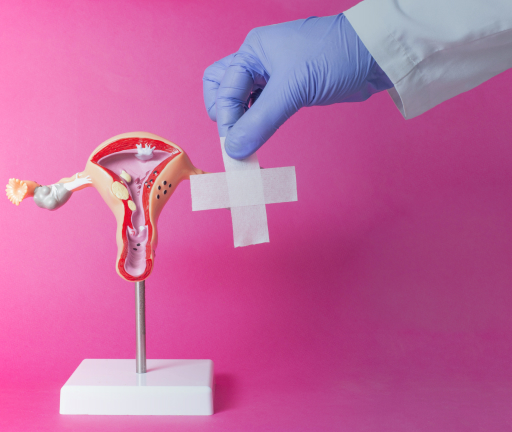Hysteroscopy is a minimally invasive diagnostic or surgical procedure that allows doctors to examine and treat the inside of the uterus (womb) using a thin, lighted tube called a hysteroscope. The procedure may be recommended if you have symptoms such as abnormal uterine bleeding, infertility, or recurrent miscarriages, or if your doctor needs to investigate or treat certain conditions affecting the uterus such as polyps, fibroids, adhesions, or uterine septum.
The procedure is typically performed in an outpatient setting and may take about 30 minutes to an hour, depending on the purpose of the examination and any additional procedures that may be needed. Here are the general steps involved in hysteroscopy:
Preparation: Before the procedure, you may be asked to empty your bladder and change into a gown. You may also be given a mild sedative or pain medication to help you relax and reduce any discomfort.
Anesthesia: Hysteroscopy can be performed under general anesthesia, regional anesthesia, or local anesthesia. The type of anesthesia used depends on your individual needs and the extent of the procedure. General anesthesia is typically used for more extensive surgeries, while local anesthesia is used for diagnostic hysteroscopy or minor procedures.
Insertion of the hysteroscope: Once you are adequately anesthetized, the doctor will insert the hysteroscope through the vagina and cervix and into the uterus. The hysteroscope is a thin, flexible tube with a light and camera on the end, allowing the doctor to see the inside of your uterus on a monitor.
Examination: The doctor will use the hysteroscope to examine the uterine lining and look for any abnormalities such as polyps, fibroids, adhesions, or abnormal blood vessels and also for observing the opening of both fallopian tubes. The doctor may also collect tissue samples for further testing, such as a biopsy.
Treatment: If any abnormalities are found, the doctor may perform additional procedures to remove or treat them during the same hysteroscopy procedure. For example, the doctor may use small instruments inserted through the hysteroscope to remove polyps or fibroids, or to break up adhesions or scar tissue. The doctor may also use a laser or other energy source to destroy abnormal tissue.
Removal of the hysteroscope: Once the examination and any necessary procedures are complete, the doctor will remove the hysteroscope from your uterus.
Recovery: You will be taken to a recovery area where you will be monitored for any complications, such as bleeding or infection. You may experience mild cramping or spot for a few days after the procedure, and you may be asked to avoid sexual activity, tampon use, and strenuous exercise for a week or two to allow your body to heal; depending upon the procedure performed.
Overall, hysteroscopy is a safe and effective way to diagnose and treat many conditions affecting the uterus, and most women can return to their normal activities within a few days after the procedure. Your doctor will discuss the specifics of your hysteroscopy procedure with you, including the risks and benefits, and answer any questions you may have.
FAQs
At Aster Hospitals we provide the highest quality of care and a transformative experience for all your healthcare needs. With our network of multi-speciality hospitals, specialised doctors, and world-class technology, we bring global standards of medical care to our patients.
After the hysteroscopy, how long should I rest?
After hysteroscopy, it is normal to experience some mild cramping, spotting, and discharge for a few days. You should rest for a short period after the procedure, but the length of time you need to rest depends on the type of hysteroscopy you had any additional procedures that were performed.
If you had a diagnostic hysteroscopy with no additional procedures, you may be able to return to your normal activities the same day or within a day or two. However, if you had a surgical hysteroscopy or any procedures performed, your doctor may recommend that you rest for a longer period. This may be anywhere from a few days to a week or more, depending on the extent of the procedure and how quickly you recover.
Your doctor will provide you with specific instructions on how much rest you need and what activities to avoid during the recovery period. You may need to avoid activities that involve heavy lifting or strenuous exercise, as these activities can increase your risk of bleeding or other complications.
It is important to follow your doctor's instructions carefully to ensure a smooth recovery and minimize your risk of complications. If you have any concerns or questions about your recovery period, be sure to talk to your doctor or healthcare provider.
What should I avoid after a hysteroscopy?
After hysteroscopy, it is important to follow your doctor's instructions carefully to ensure a smooth recovery and minimize your risk of complications. Here are some general guidelines on what to avoid after hysteroscopy:
- Strenuous activity: Avoid heavy lifting, strenuous exercise, or any other activities that could put a strain on your body, especially during the first few days after the procedure. Your doctor will provide you with specific instructions on when you can resume your normal activities.
- Sexual activity: It is recommended to avoid sexual activity for at least a week after a hysteroscopy to allow your body time to heal and reduce the risk of infection.
- Tampons: Avoid using tampons or other vaginal products, such as douches, for a few days after the procedure to minimize the risk of infection.
- Baths: Avoid taking baths or using hot tubs for a few days after the procedure to minimize the risk of infection.
- Swimming: It is recommended to avoid swimming for at least a week after the procedure to minimize the risk of infection.
- Alcohol and tobacco: Avoid drinking alcohol and smoking tobacco for a few days after the procedure as they can slow down the healing process.
What are the advantages of hysteroscopy?
- Hysteroscopy is a minimally invasive surgical procedure that allows a doctor to examine the inside of the uterus using a thin, lighted instrument called a hysteroscope. There are several advantages of hysteroscopy, including:
Accurate diagnosis: Hysteroscopy allows for direct visualization of the uterine cavity, which helps doctors identify and diagnose conditions that may not be visible with other diagnostic tools, such as ultrasound.
Minimally invasive: Hysteroscopy is a minimally invasive procedure that does not require any incisions, which means that recovery time is typically shorter and less painful than with traditional surgery.
Treatment: In addition to diagnosis, hysteroscopy can also be used to treat certain conditions, such as removing polyps or fibroids, treating endometriosis, and addressing abnormal bleeding.
Local anesthesia: Hysteroscopy can be performed using local anesthesia, which means that patients can avoid the risks and recovery time associated with general anesthesia.
Outpatient procedure: Hysteroscopy is typically performed on an outpatient basis, which means that patients can go home the same day and avoid an overnight hospital stay.
Minimal scarring: Because a hysteroscopy is a minimally invasive procedure, there is little to no scarring associated with the procedure.
Higher success rates: Hysteroscopy has been shown to have higher success rates in treating certain conditions, such as removing intrauterine adhesions or correcting uterine abnormalities.
Can hysteroscopy detect uterine cancer?
Yes
Can hysteroscopy be used as a form of birth control?
Hysteroscopy cannot be used as a form of birth control. It is a diagnostic procedure used to examine the uterus and detect any abnormalities, such as cancer or fibroids.
What is the most common complication of hysteroscopy?
Hysteroscopy is generally considered a safe and low-risk procedure, but like any medical procedure, there is a risk of complications. The most common complication of hysteroscopy is mild cramping and vaginal bleeding, which usually resolves within a few days after the procedure.
Other less common complications of hysteroscopy include:
- Infection: Hysteroscopy can introduce bacteria into the uterus, increasing the risk of infection. Symptoms of infection may include fever, chills, vaginal discharge with a foul odor, or abdominal pain.
- Perforation: In rare cases, the hysteroscope can cause a perforation (hole) in the uterus, which may require additional surgery to repair. Perforation can occur if the uterus is weak or if the hysteroscope is inserted too forcefully.
- Fluid overload: Hysteroscopy involves the use of fluid to expand the uterus and improve visualization. In rare cases, too much fluid can be absorbed into the bloodstream, causing fluid overload, which can lead to heart failure.
- Adverse reaction to anesthesia: If general anesthesia is used, there is a risk of an allergic reaction or other adverse effects from the medication.
- Bleeding: While bleeding is a common side effect of hysteroscopy, excessive bleeding may require further treatment.
What is the post-operative care to be taken after hysteroscopy?
After hysteroscopy, it is important to follow proper postoperative care to help ensure a smooth recovery and minimize the risk of complications. Here are some general steps that you can take for postoperative care after hysteroscopy:
Rest: Plan to rest for at least 24 hours after the procedure, and avoid strenuous activity and heavy lifting for a few days after the procedure.
Pain relief: Over-the-counter pain medications, such as acetaminophen or ibuprofen, can help relieve any cramping or discomfort you may experience after the procedure. Your doctor may also prescribe stronger pain medications if necessary.
Hydration: Drink plenty of fluids to stay hydrated and help flush out any remaining fluids or medication from your system.
Follow instructions for discharge: After hysteroscopy, you may experience some light bleeding or discharge for a few days. Follow your doctor's instructions for how to manage this, including what kind of pads to use and how often to change them.
Avoid sexual activity: Refrain from sexual activity for at least a week after the procedure to allow your body time to heal.
Avoid swimming: Avoid swimming or taking baths for at least a week after the procedure to minimize the risk of infection.
Attend follow-up appointments: Be sure to attend all follow-up appointments with your doctor to monitor your recovery and ensure that there are no complications.
What happens when a hysteroscopy fails?
A hysteroscopy may fail in certain cases such as:
- Hysteroscopes may not be able to pass through the cervix, or the view of the uterus may be obstructed by blood or other fluids.
- The anatomy of the uterus may make it difficult or impossible to perform a hysteroscopy. For example, if the uterus is severely tilted, it may be difficult to get a clear view of the uterine lining.
- Patient factors, such as the thickness of the uterine lining, the presence of scar tissue, or the size and location of any abnormalities in the uterus.
In such conditions, alternative investigations and management indications can be done by the doctor like
- Magnetic resonance imaging
- Computed tomography
- Ultrasound Scans of the endometrium
How often should a woman have a hysteroscopy?
The frequency of hysteroscopy depends on a woman's health and medical history. Generally, a hysteroscopy may be recommended if a woman is experiencing abnormal bleeding, infertility, or recurrent miscarriages. It may also be recommended as a follow-up to abnormal Pap smear results or to monitor the growth of uterine fibroids.
Can I eat before a hysteroscopy procedure?
Whether you can eat before a hysteroscopy procedure depends on the type of anesthesia used. If you are having a hysteroscopy with local anesthesia, you can eat normally before the procedure. If you are having a hysteroscopy with general anesthesia, your doctor may advise you not to eat or drink anything for several hours before the procedure. It's important to follow your doctor's specific instructions for preparing for the hysteroscopy.



